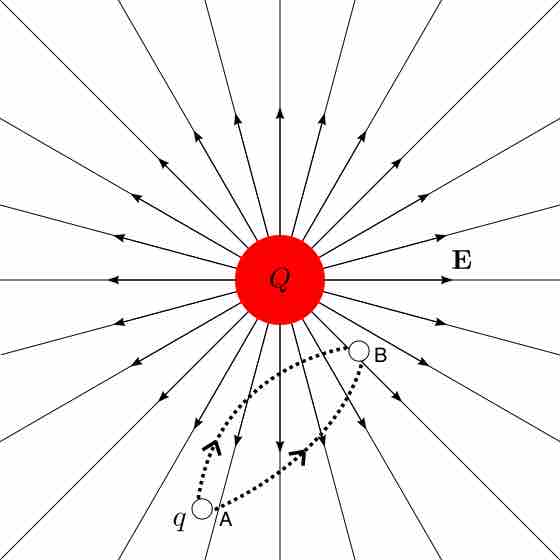Electric potential energy is a type of potential energy that results from Coulomb forces. It is measured in joules and depends on the positioning of charged particles relative to one another, as well as the magnitude of their respective charges.
The potential energy (UE) between charges q and Q can be calculated as a function of distance between the charges (r):
If there are three or more charges, the above formula can be modified so that the potential energies between all charges are summed. Consider, for example, the case involving charges Q1, Q2 and Q3:
In this example, r12 represents the distance between Q1 and Q2, r23 represents the distance between Q2 and Q3, and r13 represents the distance between Q1 and Q3. The above formula can be modified for any number of charges.
Potential Difference
Potential difference , or voltage, is the difference in electric potential energy between two points. It is denoted by ∆V and has units of volts, or joules per Coulomb.
Voltage denotes the work per unit charge that must be done against a static electric field to move a charge from one point to another. It may represent a source of energy, or lost, stored or used energy. Voltage also is defined such that negative charges are pulled towards higher voltages, while positive charges move towards lower voltages. Thus, current in wires flows from higher to lower voltages.
Potential difference is independent of path taken from one point to another, and may be measured by any of a number of instruments . These include the voltmeter, the potentiometer, and the oscilloscope. It is most typically measured in circuits, and in such situations can be calculated using Ohm's Law, which will be covered in a later atom.

Potential difference in a static field
When a charge q moves from point A to point B, the potential difference is independent of path taken.